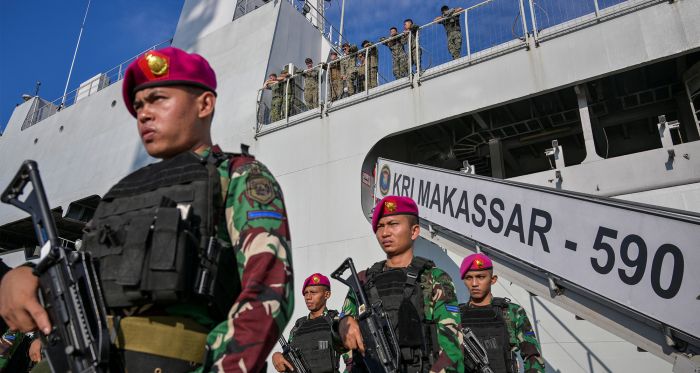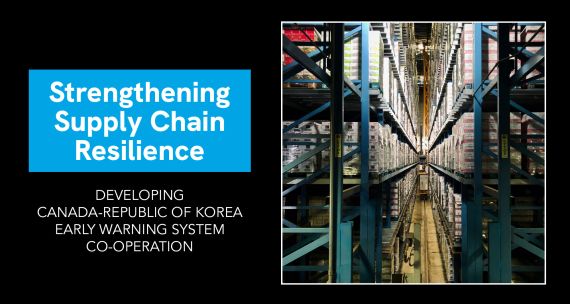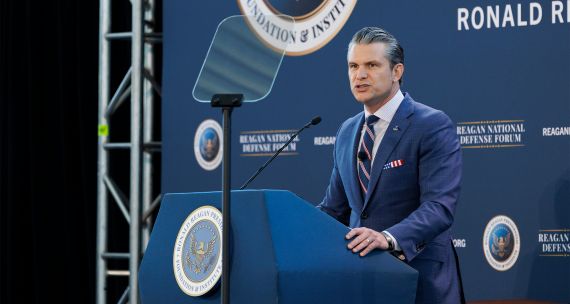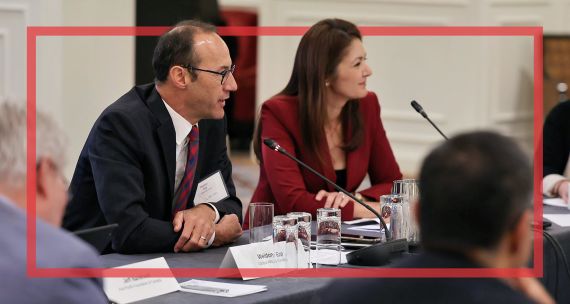The Takeaway
Canada has formalized its defence relationship with Indonesia through the recent signing of a Military Cooperation Memorandum of Understanding (MoU), establishing structured collaboration in joint exercises, maritime security, capacity-building, and professional exchanges.
Combined with the Canada-Indonesia Comprehensive Economic Partnership Agreement — which is expected to be signed in 2025 — the defence MoU reflects Ottawa’s integrated approach to Southeast Asia, linking security and economic tools.
Indonesia’s status as Southeast Asia’s largest economy and a strategically located maritime hub makes it a pivotal partner in a crowded regional landscape. Jakarta’s non-aligned posture means Canada’s value lies in complementing U.S., Australian, and Japanese initiatives while delivering focused contributions in areas such as maritime domain awareness and capacity-building, shaping the depth and durability of Canada’s Indo-Pacific presence.
In Brief
- On August 25, Canada and Indonesia inked a Military Cooperation MoU between the Canadian Armed Forces (CAF) and the Indonesian National Armed Forces (TNI). The agreement covers joint training, maritime security co-operation, defence capacity-building, and exchanges to strengthen interoperability.
- The signing of the MoU coincided with Canada’s participation in the Super Garuda Shield joint exercises. The Super Garuda Shield, which began in 2007 as a bilateral U.S.–Indonesia exercise, has grown into a major multinational platform for defence co-operation. The 2025 iteration was the largest to date, bringing together more than 6,500 troops from 13 nations — including Canada, Australia, Brazil, Brunei, France, India, Indonesia, New Zealand, South Korea, Thailand, the U.K., and the U.S. — with Cambodia, India, and Papua New Guinea joining as observers. This year’s exercise emphasized humanitarian assistance, disaster relief, and joint operations, providing a practical testbed for bilateral and multilateral co-ordination.
- Canada complements its bilateral defence and security co-operation efforts through regional security forums. It is a founding member of the Association of Southeast Asian Nations (ASEAN) Regional Forum, participates in the ASEAN Defence Ministers Meeting-Plus as an observer in humanitarian and maritime security working groups, and has signed previous security agreements with Malaysia, the Philippines, and Singapore.
Implications
The MoU strengthens Canada’s Indo-Pacific footprint by anchoring its security presence in Southeast Asia. Indonesia’s role as Southeast Asia’s largest economy and a strategic maritime state makes it pivotal for Canada. The country is home to key maritime routes, including the Strait of Malacca and the Sunda Strait, which are vital to global trade flows. The Strait of Malacca, for example, handles about 30 per cent of global trade, serving as a key corridor linking the Indian and Pacific Oceans. The Sunda Strait, while less utilized, provides a valuable strategic route in the event of disruptions in the Malacca Strait.
This geographic importance intersects with Canada’s broader regional activities. According to a study by the Lowy Institute, Canada conducted 35 joint exercises in 2023-24 in Southeast Asia and ranked 10th in its relative importance in its defence co-operation to the region. It is entering a crowded field where trust-building and sustained engagement matter. To stand out, Ottawa will need to demonstrate long-term consistency and deliver niche contributions in areas such as maritime domain awareness, humanitarian assistance, and climate security. For Indonesia — a non-aligned country that conducts exercises with both Western and non-Western powers — Canada’s value lies in its ability to complement broader Australian, Japanese, and U.S. initiatives while offering practical co-operation without forcing strategic alignment. This balancing act will shape how deeply Canada can embed itself into Southeast Asia’s evolving security networks.
Canada’s engagement reflects broader regional dynamics. Multinational drills such as Super Garuda Shield, Balikatan (the annual U.S.–Philippines exercise), and the Rim of the Pacific Exercise (the largest maritime exercise in the Indo-Pacific) underscore the growing military commitment of regional and extra-regional partners, such as Canada, to Southeast Asia. Collectively, these activities reinforce Canada’s integration into the region’s evolving security architecture. The U.S. remains the top overall defence partner in the region, responsible for around 40 per cent of all bilateral and multilateral exercises in 2023-24, particularly with maritime Southeast Asian states. Japan and Australia follow closely, with 134 and 104 exercises respectively, underpinned by agreements that deliver tangible benefits such as logistics support, intelligence sharing, and defence technology transfers. By contrast, China’s defence agreements are often more symbolic, focusing on dialogue and goodwill gestures rather than substantive interoperability or technology sharing. Its influence is stronger in mainland Southeast Asia, where it is the top partner for Laos and Cambodia.
What’s Next
1. Operationalizing the MoU
Canada and Indonesia are expected to advance concrete initiatives under the MoU, including bilateral exercises, officer exchanges, maritime security co-operation, and capacity-building programs. Participation in Super Garuda Shield 2025 provided a timely platform to test interoperability, crisis-response co-ordination, and humanitarian assistance operations with regional partners. Going forward, the challenge will be to institutionalize these activities to ensure continuity and deepen defence collaboration.
2. Regional integration through ASEAN frameworks
The expected conclusion of Canada-ASEAN Free Trade Agreement negotiations in 2025 presents an opportunity to integrate bilateral defence co-operation with Indonesia into a broader regional economic strategy. Aligning security initiatives with economic engagement could reinforce Ottawa’s credibility and influence, but success will depend on navigating ASEAN’s preference for consensus-based, non-confrontational approaches and the broader regional hedging between major powers. Ottawa’s ability to leverage niche capabilities, demonstrate reliability, and provide practical contributions will determine the depth and sustainability of its Indo-Pacific presence.
3. Navigating Indonesia’s military-civilian balance
In March, Indonesia’s defence policy under President Prabowo Subianto was amended to expand the military’s role in civilian affairs, reviving elements of the former "dwifungsi" doctrine where the military was assigned civilian roles. This dual system was formally abolished in 1998, ending roughly three decades of military entrenchment in politics and civil administration. Critics have argued that reviving the practice would risk undermining democratic institutions.
That concern has taken on new urgency in recent weeks, as many protesters see the government’s reliance on security forces as part of a broader return to military dominance in civilian life. Protests that began in late August over legislative perks and cost-of-living concerns have recently escalated, turning violent after the death of a delivery driver and fuelling broader anger over police brutality and Prabowo’s administration. The government’s aggressive response to these demonstrations has intensified scrutiny of the militarization of civilian life, with clashes erupting in cities such as Jakarta and Makassar.
As Indonesia updates its National Defence Policy for 2025-29, it faces the challenge of strengthening security while protecting democratic norms. For Canada, this underscores the need to integrate defence co-operation with support for transparency, accountability, and civil-military balance to maintain credible, sustainable partnerships in the region.
• Edited by Vina Nadjibulla, Vice-President Research & Strategy, and Ted Fraser, Senior Editor, APF Canada.





